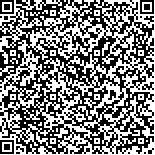下载中心
优秀审稿专家
优秀论文
相关链接
摘要

基于卫星遥感的水体提取算法对面积较大的水体效果较好,应用于细小水体时受混合像元、异物同谱等因素影响,容易出现误判。Sentinel-2卫星多光谱遥感数据空间分辨率为10 m、20 m、60 m,双星时间分辨率5 d,时间和空间分辨率较高,因此本文采用了Sentinel-2绿光波段(560 nm)、红边波段(705 nm)、近红外波段(842 nm、865 nm)和短波红外波段(2190 nm)的遥感反射率,提出了一种植被红边水体指数算法RWI(Vegetation Red Edge based Water Index)。对比分析了植被、阴影、建筑物、混合像元、裸土、水体6种地物的归一化遥感反射率,从机理上解释了为什么RWI比其他水体指数具有更好的提取细小水体的效果。本文对比了常用的几种水体提取算法,包括改进的归一化差异水体指数MNDWI(Modified Normalized Difference Water Index)、多波段水体指数MBWI(Multi-Band Water Index)、自动水提取指数AWEI(Automated Water Extraction Index),以人工目视解译的水体结果为准,对比以上几种算法得到的水体提取结果,得出RWI、MNDWI、MBWI、AWEIsh、AWEInsh的面积提取差异分别为3.6%,4.2%,12.2%,8.8%,19.8%。从结果可以看出RWI算法精度最高。从影像提取结果来看,本文提出的RWI算法提取的水体边界效果更佳,而且能够一定程度上消除山体和建筑物阴影、云阴影以及混合像元的影响。同时,在2016-01—2018-12时间范围内筛选选取了共43景无云的Sentinel-2影像,利用本文提出的算法对雄安新区、神东矿区、永城矿区3个区域的细小水体分布开展了多时相分析。观察后发现每个时相的结果均十分良好,细小水体的边界区分度较高,基本没有错提、漏提,算法具有良好的适用性和稳定性。
The water body extraction algorithm based on satellite remote sensing is mainly aimed at large- and medium-sized lakes or large rivers. When applied to small water bodies, misjudging often occurs. The multi-spectral remote sensing data of the Sentinel 2 satellite has a spatial resolution of 10, 20, and 60 meters; a dual-star time resolution of 5 days; and a high temporal and spatial resolution. Therefore, this paper uses the sentinel-2 green light band (560 nm), red-edge band (705 nm), near-infrared band (842 nm, 865 nm), and short wave-infrared band (2190 nm) for remote sensing reflectance. A new water index algorithm (red edge-based water index, RWI for short) is proposed for the extraction of fine water. The normalized remote sensing reflectance of vegetation, shadow, building, mixed pixel, bare soil, and water body is compared and analyzed. The mechanism explains why RWI has a better effect of extracting fine water bodies compared with other water body indexes.To quantitatively evaluate the advantages of the RWI water body extraction algorithm proposed in this paper, this paper compares several current water body extraction algorithms, including the improved normalized difference water index MNDWI (modified normalized difference water index), multi-band water body index MBWI (multi-band water index), and AWEI (automatic water extraction index). The water body extraction results obtained by several algorithms and the area statistics of the artificial water interpretation of the water body results are calculated using the error formula to obtain RWI. The errors of MNDWI, MBWI, AWEIsh, and AWEInsh are 3.6%, 4.2%, 12.2%, 8.8%, and 19.8%, respectively. Results show that the RWI algorithm has the highest accuracy. At the same time, through analysis, the advantages and disadvantages of several water extraction results are quantitatively evaluated. From the results of image extraction, this paper proposes that the water boundary extraction method extracted by the RWI water body extraction algorithm is better, and it can eliminate mountains, building shadows, and clouds. The effect of shadows can eliminate the effects of mixed pixels.At the same time, this paper carried out multi-temporal water extraction in Xiong’an New District, Shendong Mining Area, and Yongcheng Mining Area. In the time range from January 2016 to December 2018, a total of 43 Sentinel-2 images without clouds were screened, and the small broken water bodies in the three areas of Xiong’an New District, Shendong Mining Area, and Yongcheng Mining Area were selected by the algorithm proposed in this paper. The distribution carried out multi-temporal analysis. Results from statistical area analysis indicate that Xiong’an New District has the largest water body area in spring, followed by summer and autumn. No significant change in water area was observed in the Shendong and Yongcheng mining areas. After careful observation, the results of each phase are very good, the boundary of the small water body is highly differentiated, and no data are misleading or missing, and the algorithm has good applicability and stability.

